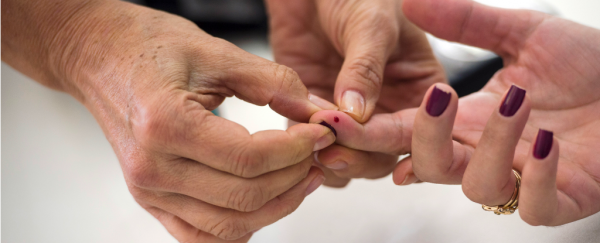Type 1 diabetes isn't an easy disease to put an end to; not only do scientists have to fix the complete lack of insulin being produced by the patient's own pancreas, but the cells they try to send in to help keep getting destroyed by the immune system. It's a medical catch-22.
But a US patent has just been approved for what could be the first functional cure for the condition – by combining insulin-delivering cells with technology that allows them to hide from the immune system for years at a time.
The cells are called 'Melligen cells', and they can produce, store, and release insulin in response to human blood sugar levels.
University of Technology Sydney (UTS) scientists have been genetically engineering these Melligen cells for years so they can release insulin in order to regulate human blood sugar levels – just like the beta cells that are destroyed by type 1 diabetes are supposed to.
And last year, the team published a paper showing they could reverse type 1 diabetes in mice.
That was great, but those mice were immunocompromised, which meant they didn't have an immune response. In the human body, the cells would still be attacked on entry. And that's where this new collaboration comes in.
The UTS scientists have now joined up with US clinical stage biotechnology company PharmaCyte Biotech, who have developed a product called Cell-in-a-Box that can, in theory, encapsulate the Melligen cells and hide them from the immune system. They've just patented the combination.
"My team and I are extremely pleased that the US patent for the Melligen cells has been granted," says lead researcher at UTS, Ann Simpson. "This takes us a step closer to releasing diabetics from the need to inject insulin daily and, more importantly, protecting them from the debilitating complications of the disease such as blindness, kidney failure and cardiovascular problems."
The aim of Cell-in-a-Box is to completely remove the immune system issue by encapsulating the Melligen cells in an immune system friendly coating, allowing them to chill out in the pancreas without being attacked.
The special cellulose structure that makes up the Cell-in-a-Box allows molecules to move in and out, letting the Melligen cells know when blood sugar is low, and producing and releasing insulin when required - all without the immune system realising it's there.
"This is a culmination of many years' work by our group and we look forward to working with PharmaCyte's Diabetes Consortium to utilise the Cell-in–a-Box technology to encapsulate the cells for preclinical trials aimed at curing diabetes," says Simpson.
"We anticipate that the capsule technology will protect the Melligen cells from the body's immune response that normally destroys foreign tissue, allowing the Melligen cells to be transplanted into humans."
The Cell-in-a-Box technology is able to stay in the body for at least two years without damage or damaging tissue nearby, meaning it could be a long-term solution for type 1 diabetes sufferers. We are exceptionally excited to see what human trials show, as this could bring us closer than ever to a functional cure for a pretty dangerous disease.
To be clear, although there are peer-reviewed studies for both of these technologies, there have not been any on the combination of Melligen cells and Cell-in-a-Box together, and how they will work together to fight type 1 diabetes. But now that the patent has been granted, the researchers will be moving into trials.
"If we are successful in this effort, it will bring to fruition the many years of research that have been conducted by Professor Simpson and her colleagues at UTS in developing these remarkable cells," said PharmaCyte's CEO, Kenneth Waggoner.
"For the millions of people worldwide who suffer from a disease of epidemic proportions, our treatment could relieve them of the onerous daily requirements for insulin administration and dietary restrictions and offer a life free from the very serious and even life-threatening complications associated with diabetes."
UTS Science is a sponsor of ScienceAlert. Find out more about their research.
